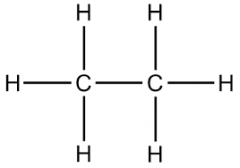![]()
![]()
![]()
Use LEFT and RIGHT arrow keys to navigate between flashcards;
Use UP and DOWN arrow keys to flip the card;
H to show hint;
A reads text to speech;
28 Cards in this Set
- Front
- Back
|
What is crude oil? |
A mixture of hundreds of compounds, that are mainly hydrocarbons. |
|
|
What are hydrocarbons? |
Compounds containing only hydrogen and carbon. |
|
|
What is a mixture? |
A substance consisiting of two or more elements or compounds that have not been chemically combined together. |
|
|
How can we separate crude oil into its different substances? |
By fractional distillation. |
|
|
What are most of the hydrocarbons in crude oil? |
Alkanes. |
|
|
What are alkanes? |
Saturated hydrocarbons. |
|
|
What does saturated mean? |
A hydrocarbon which contains as many hydrogen atoms as possible in their molecules. |
|
|
What is the alkane general formula? |
CnH2n+2 |
|
|
Give some examples of alkanes. |
-Methane Ch4 -Ethane C2H6 -Propane C3H8 -Butane C4H10 -Heptane C5H12 -Hexane C6H14 -Heptane C7H16 -Octane C8H18 -Nonane C9H20 -Decane C10H22 |
|
|
Draw the formula for ethane. |

|
|
|
Explain the process of fractional distillation. |
-Crude oil is heated until it vapourises -Passes through the fractionating column -The gases condense when they reach the temperature of their boiling points -They turn to liquids -Collected at different levels -Continuous process |
|
|
What is a fractionating column? |
A tall tower that is hot at the bottom and cold at the top that is used for the fractional distillation of crude oil. |
|
|
What liquids are collected from the tower? |
Cold Fuel Gas (below 40) Petroleum (40-175) Kerosene (150-240) Diesel (220-275) Lubricating oil (250-350) Hot Bitumen (below 350) |
|
|
What are these liquids used for? |
-Fuel gas: camping gas, fuels distillation, LPG -Petroleum: fuel for cars/motorcycles -Kerosene: fuels jet engines, greenhouse heaters -Diesel: fuel for lorries/trains -Lub. oil: fuel for ships, heating large buildings -Bitumen: roofing and road surfacing |
|
|
Which chains are more useful? Why? |
-Shorter chains -Lighter fractions make better fuels |
|
|
Where are the shorter chains found? |
At the top of the fractionating column. |
|
|
What are the properties of short chains and long chains? |
Short chain Long chain -low boiling point -high boiling point -high volatility -low volatility -low viscosity -viscous -flammable -smoky flame |
|
|
When fuels burn, what do they release into the atmosphere and how does this affect the environment? |
-Carbon dioxide: global warming contribution -Carbon monoxide: poisonous -Sulphur dioxide: acid rain -Nitrogen oxides: acid rain -Particulates: smog/global dimming |
|
|
What happens during combustion? |
The carbon and hydrogen in the fuels are oxidised. |
|
|
What does the combustion of hydrocarbon fuels release? |
Heat. |
|
|
How can sulphur be removed from fuels before they are burned? |
-Catalytic converter (exhaust gases react) -Flue gas desulfurisation (react with qucklime) |
|
|
What is the combustion formula? |
any hydrocarbon + oxygen --> water + CO2 |
|
|
What is the test for water? |
-Cobalt chloride paper -Blue when dry -Pink when water is present |
|
|
How does the number of carbon atoms in a hydrocarbon affect its boiling point? |
It increases the temperature of the boiling point. |
|
|
What is the test for incomplete combustion? |
any + oxygen --> carbon+ carbon + water hydrocarbon monoxide |
|
|
What are the advantages of using biofuels? |
-Cleaner -Renewable and reduce greenhouse gases -Easy to source -Lower pollution levels -Reduce dependency on fossil fuels |
|
|
What are the disadvantages of using biofuels? |
-Expensive to produce -Fertilizers (may cause water pollution) -Shortage of food -Monoculture -Water use |
|
|
How do biofuels reduce global warming (compared to fossil fuels)? |
-CO2 neutral -Reduce greenhouse gas emissions -Stop us fro using fossil fuels |

